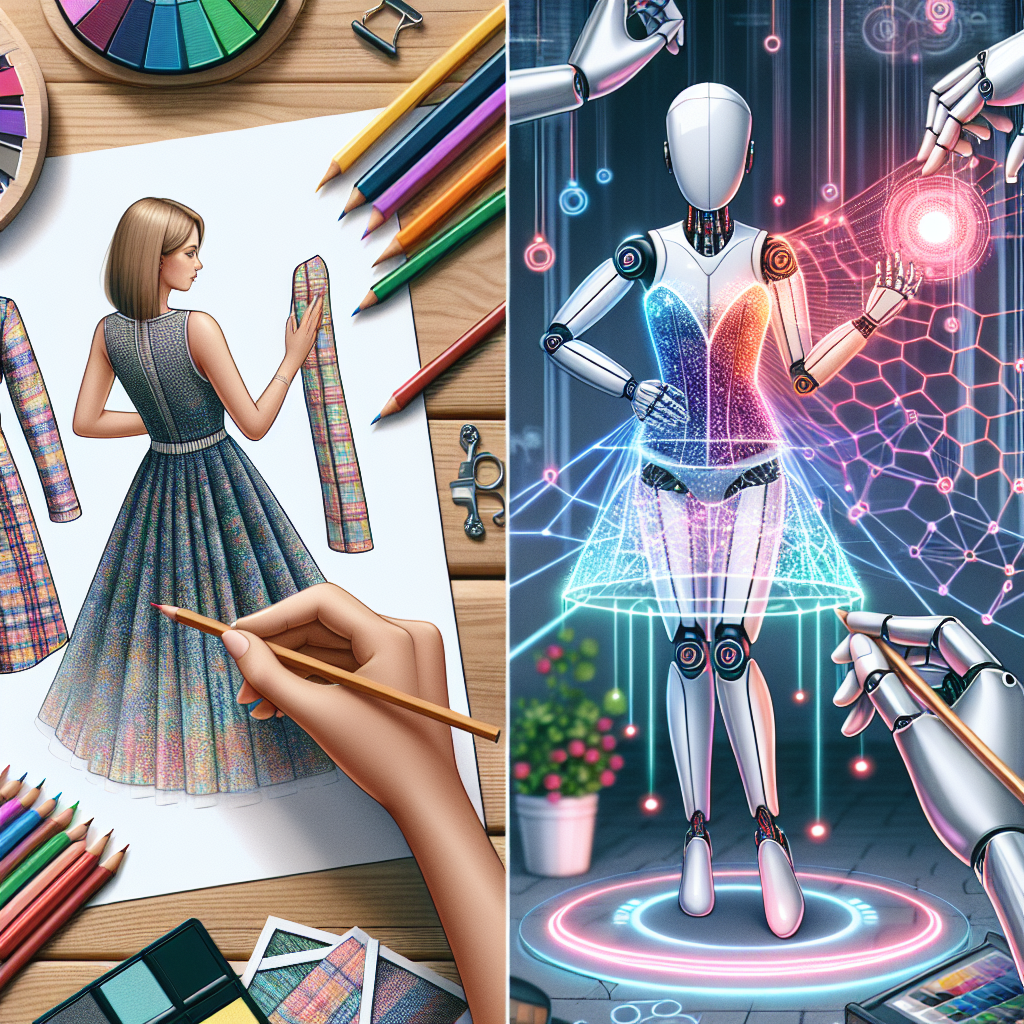The fashion industry is constantly evolving and adapting to new technologies that can improve efficiency, sustainability, and creativity. One of the most significant advancements in recent years is the integration of artificial intelligence (AI) into the fashion design process. AI has the potential to revolutionize the industry in various ways, from creating personalized shopping experiences to streamlining production processes.
AI-powered tools are already being used by fashion brands to analyze data, predict trends, and optimize supply chains. These tools can help designers and retailers make more informed decisions about which styles to produce, how much inventory to stock, and where to sell their products. By leveraging AI, fashion companies can reduce waste, minimize costs, and maximize profits.
One of the key ways AI is revolutionizing the fashion industry is through the use of virtual fitting rooms. These tools allow customers to try on clothes virtually, using their measurements and body shape to see how garments will look on them before making a purchase. Virtual fitting rooms can help reduce returns and improve customer satisfaction, as shoppers can feel more confident that the items they are buying will fit them correctly.
Another way AI is transforming the fashion industry is through the use of predictive analytics. By analyzing data from social media, search engines, and sales trends, AI algorithms can predict which styles will be popular in the future. This information can help designers and retailers create products that are more likely to sell, reducing the risk of overstocking unpopular items.
AI is also being used to personalize the shopping experience for customers. By analyzing past purchases, browsing history, and social media interactions, AI algorithms can recommend products that are tailored to each individual’s preferences. This can help increase sales and customer loyalty, as shoppers are more likely to buy items that are relevant to their tastes.
In addition to improving the design and retail aspects of the fashion industry, AI is also being used to enhance sustainability efforts. By optimizing supply chains, reducing waste, and improving energy efficiency, AI can help fashion companies reduce their environmental impact. For example, AI algorithms can help brands predict demand for certain products, allowing them to produce only what is needed and minimizing excess inventory that may end up in landfills.
Despite the many benefits of AI in the fashion industry, there are also challenges and concerns that need to be addressed. One of the main concerns is the potential impact on jobs, as AI-powered tools may replace some roles that are currently performed by humans. However, many experts believe that AI will create new opportunities for workers, such as roles in data analysis, software development, and customer service.
Another challenge is the ethical implications of AI in fashion, such as data privacy and bias in algorithms. As AI becomes more integrated into the industry, it is important for companies to prioritize transparency, accountability, and fairness in their use of AI technologies. By implementing ethical guidelines and standards, fashion brands can ensure that AI is used responsibly and ethically.
In conclusion, the future of fashion is being shaped by AI in numerous ways. From virtual fitting rooms to predictive analytics, AI is revolutionizing the industry by improving efficiency, sustainability, and customer experiences. While there are challenges and concerns that need to be addressed, the benefits of AI in fashion are clear. As technology continues to advance, the fashion industry will continue to evolve and innovate, with AI playing a central role in driving these changes.
FAQs:
Q: How is AI being used in fashion design?
A: AI is being used in fashion design to analyze data, predict trends, optimize supply chains, and personalize shopping experiences. AI-powered tools can help designers and retailers make more informed decisions about which styles to produce, how much inventory to stock, and where to sell their products.
Q: What are virtual fitting rooms and how do they work?
A: Virtual fitting rooms are tools that allow customers to try on clothes virtually, using their measurements and body shape to see how garments will look on them before making a purchase. These tools help reduce returns and improve customer satisfaction by allowing shoppers to see how items will fit them before buying.
Q: How can AI help improve sustainability in the fashion industry?
A: AI can help improve sustainability in the fashion industry by optimizing supply chains, reducing waste, and improving energy efficiency. By predicting demand for certain products and minimizing excess inventory, AI can help fashion companies reduce their environmental impact.
Q: What are some of the ethical concerns surrounding AI in fashion?
A: Some of the ethical concerns surrounding AI in fashion include data privacy, bias in algorithms, and the potential impact on jobs. It is important for companies to prioritize transparency, accountability, and fairness in their use of AI technologies to ensure that they are used responsibly and ethically.

